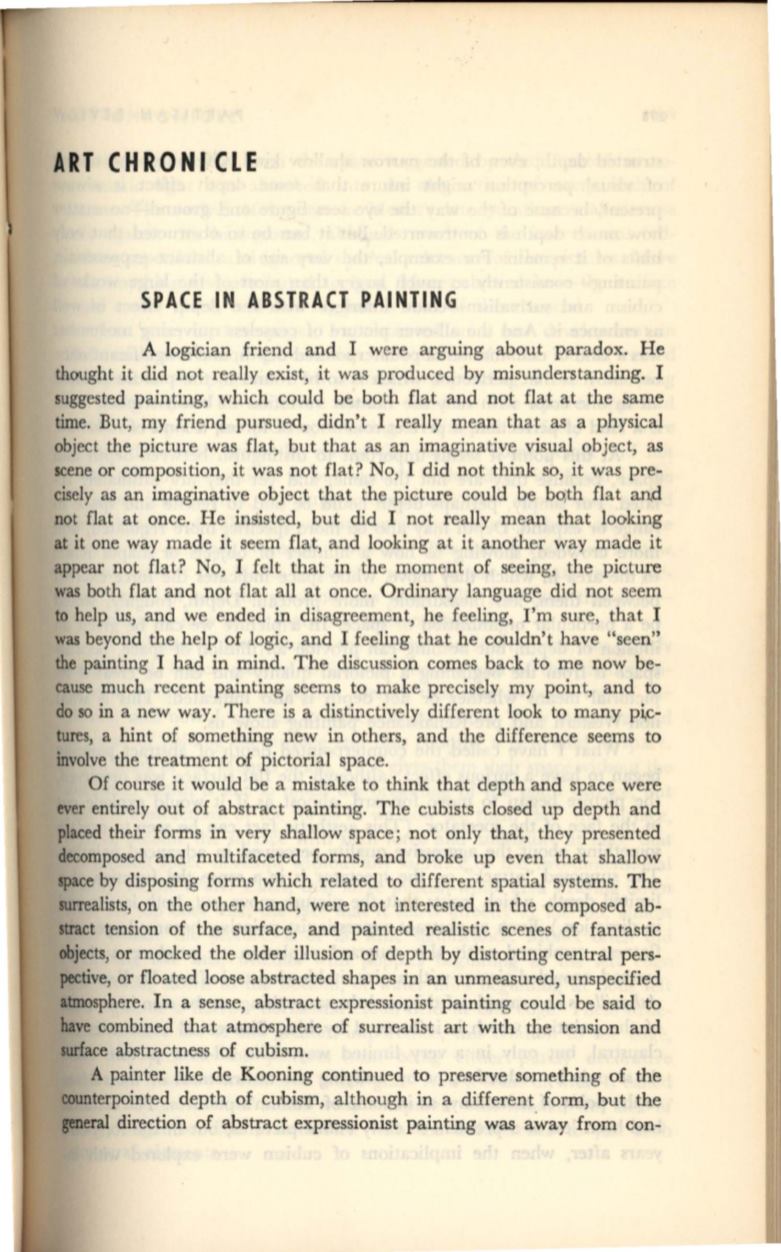
ART CHRONI CLE
SPACE IN ABSTRACT PAINTING
A logician friend and I were arguing about paradox. He
thought it did not really exist, it was produced by misunderstanding. I
suggested painting, which could be both flat and not flat at the same
time. But, my friend pursued, didn't I really mean that as a physical
object the picture was flat, but that as an imaginative visual object, as
scene or composition, it was not flat? No, I did not think so, it was pre–
cisely as an imaginative object that the picture could be bo;th flat and
not flat at once. He insisted, but did I not really mean that looking
at it one way made it seem flat, and looking at it another way made it
appear not flat? No, I felt that in the moment of seeing, the picture
was both flat and not flat all at once. Ordinary language did not seem
to help us, and we ended in disagreement, he feeling, I'm sure, that I
was
beyond the help of logic, and I feeling that he couldn't have "seen"
the painting I had in mind. The discussion comes back to me now be–
cause much recent painting seems to make precisely my point, and to
do so
in
a new way. There is a distinctively different look to many
p~c
tures, a hint of something new in others, and the difference seems to
involve the treatment of pictorial space.
Of course it would be a mistake to think that depth and space were
ever entirely out of abstract painting. The cubists closed up depth and
placed their forms
in
very shallow space; not only that, they presented
decomposed and multifaceted forms, and broke up even that shallow
space by disposing forms which related to different spatial systems. The
surrealists, on the other hand, were not interested in the composed ab–
stract tension of the surface, and painted realistic scenes of fantastic
objects, or mocked the older illusion of depth by distorting central pers–
pective, or floated loose abstracted shapes in an unmeasured, unspecified
atmosphere. In a sense, abstract expressionist painting could be said to
have combined that atmosphere of surrealist art with the tension and
surface abstractness of cubism.
A
painter like de Kooning continued to preserve something of the
counterpointed depth of cubism, although in a different form, but the
peral
direction of abstract expressionist painting was
a~ay
from con-


